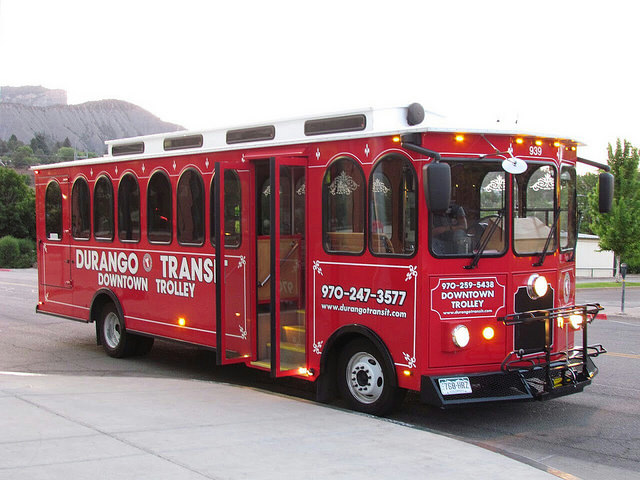February 1, 2017 | Will Toor
Lawmakers in Colorado are debating how to adequately fund transportation in Colorado. Much of the discussion has focused on revenue to maintain and expand highways. However, it is important to understand the broader picture of how Colorado funds all types of transportation infrastructure. In this blog, we examine how Colorado funding for public transportation compares to other states.
The state has historically invested very little state money into transit. The major source of state funding for the Colorado Department of Transportation is the state gas tax, which has not been increased since 1992. Under current state law, this funding is limited to highway expenditures and cannot be used for transit. However, nationwide, there are 20 states in which gas taxes are used to support public transit.
The only consistent state source of transit revenue in Colorado is $15 million per year coming from vehicle registration fees that was established as part of the 2009 FASTER legislation. This is a fixed level of funding, rather than a percentage of the total collected, so each year it declines in buying power due to inflation – it has already declined by 13 percent in purchasing power.
The level of state support for public transit in Colorado is one of the lowest in the country. In Colorado’s Statewide Transit Plan, CDOT used information from the National Transit Database to compare Colorado’s state funding for both capital and operating to the nation as a whole. For the nation as a whole, including states that do not provide any support for transit, states provide 26 percent of the operating costs for transit, and 12 percent of the capital costs.
In Colorado, in 2012 the state provided no operating funding and 1 percent of transit capital funding. Since then, investment in operating has gone up slightly but remains at less than 1 percent.
Colorado funding for transit operations and capital compared to the national average

To some extent, local governments and regional transit agencies have stepped into this gap, raising local tax revenues to help fund transit. However, these local revenues have not been enough to meet the need for transit, leaving a large gap.
Another way to look at this is to ask what the state investment in public transit is in per capita expenditures. Colorado invests $2.61 per person per year, less than one cent per day. The average state invests $53.90, or twenty times more than Colorado. The following chart shows annual per capita transit investment by state. Colorado is number 29 on the chart, with per capita investments below nearby states such as Wyoming, Kansas, North Dakota and New Mexico. Colorado’s investment is approximately 100 times lower than the leading states, which invest around $250 per person each year in transit service.

Last summer SWEEP released a study of transit funding needs in Colorado, conducted with the Colorado Public Interest Research Group, which concluded that there was a statewide funding gap of $574 million/year for public transit operations and capital in order to provide basic levels of rural transit service and interregional service and in order to improve transit service in urban areas across the state.
New state funding sources for transportation should be designed to provide Coloradans with options to meet the broad multimodal transportation needs of our residents.
This analysis makes it clear that Colorado is well below the norm for state funding for public transit, and summarizes analyses that demonstrate that public transit in Colorado is underfunded by at least $500 million per year. While the state is not solely responsible for transportation investment – local and federal funding play a big role – it is a crucial partner for implementing good public transit, bicycle and pedestrian infrastructure, in addition to highways.
Any new transportation funding, whether implemented through legislation or by ballot should include meaningful funding for public transit.
Other sources and citations:
http://www.denverpost.com/2017/01/22/colorado-roads-tax-hike/
City and county governments, however, have been allowed to use their share of gas tax for transit since the passage of SB13-048, http://www.leg.state.co.us/clics/clics2013a/csl.nsf/fsbillcont2/9D4690717C1FF9DC87257AEE00572392/$FILE/048_enr.pdf
Robert Puentes and Ryan Prince, The Brookings Institution, Fueling Transportation Finance, March 2003.
American Association of State Highway and Transportation Officials, Final Report 2016 – FY 2014 Data: Public Transportation: Survey of State Funding, April 2016,
http://scopt.transportation.org/Documents/SSFP-10-UL.pdf
Source- chart is extracted from 50 Steps Toward Carbon-Free Transportation: Rethinking U.S. Transportation Policy to Fight Global Warming, Frontier Group, 2016
Katz et al, Colorado’s Transit, Biking and Walking Needs Over The Next 25 Years, SWEEP/COPIRG 2016, http://www.swenergy.org/data/sites/1/media/documents/publications/documents/COPIRG-Transit-Report.pdf



